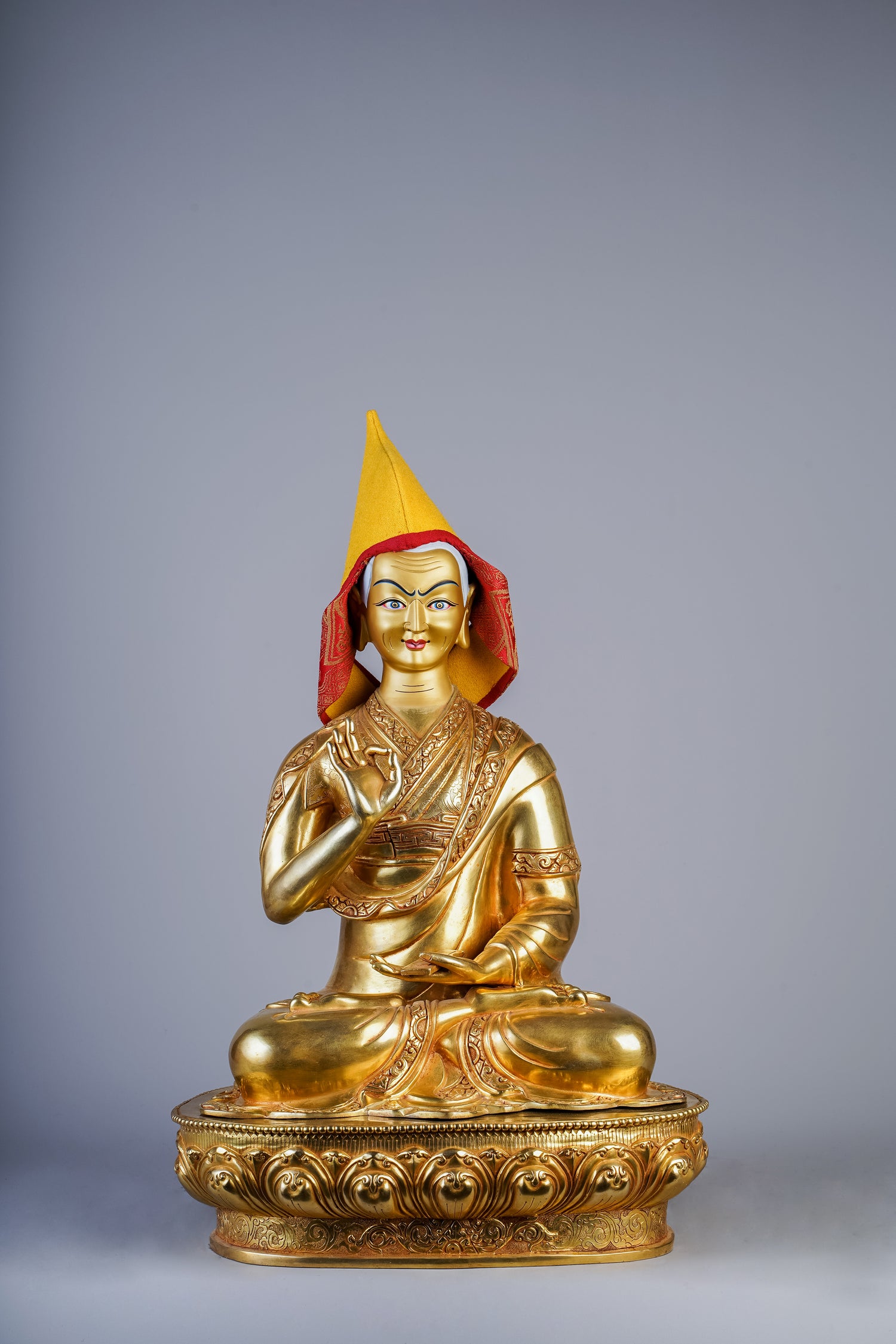
Tsongkhapa: The Prophesised Teacher
Tsongkhapa - ཙོང་ཁ་པ་བློ་བཟང་གྲགས་པ་ - 宗喀巴
Known as Jé Rinpoche, Tsongkhapa was born to a father reciting the Expression of the Names of Mañjuśhrī each day and a mother who was always chanting the six-syllable mantra of Avalokiteśhvara — Oṃ Mani Padme Hūṃ, in 1357, in Tsong Kha region of Amdo Province, in eastern Tibet. Among six children, Tsongkhapa was the fourth son and is said to have been a fulfillment of the prophecy that Shakyamuni Buddha stated, as well as the dreams of his parents.
In his previous incarnation, Tsongkhapa was a young boy who offered the Shakyamuni Buddha a clear crystal rosary and received a conch shell in return. It is said that the Buddha then called his disciple Ānanda and prophesied that the boy would be born in Tibet, would establish a great monastery between the areas of Dri and Den, and would present a crown to the statue of the Buddha in Lhasa along with being instrumental in the flourishing of the Dharma in Tibet. The Buddha gave the young boy the future name of Sumati Kīrti, or, in Tibetan, Losang Drakpa. The conch shell that the Buddha had given the boy was unearthed during the building of Ganden monastery and, until 1959, could still be seen in Drepung, the largest monastery in Tibet. The crown still rests on the head of the Buddha statue in Lhasa.
After around a thousand years of Shakyamuni Budhha’s parinirvana, further prophesies were given by the Lotus-Born Master, Guru Rinpoche. He predicted that a fully ordained Buddhist monk named Losang Drakpa would appear in the east near the land of China. He said that this monk would be regarded as being an emanation of a bodhisattva of the greatest renown and would attain the complete enjoyment body of a Buddha.
Iconography of Tsongkhapa
DREAMS BEFORE BIRTH
A year before his birth, his father had a dream of a monk arriving from the Five-Peaked Mountain, also known as Wu-Tai-Shan in China, which is associated with the Boddhisattva Manjushri. In the dream, his father had given the monk accommodation in their shrine room for nine months, as the monk required shelter for that amount of time. Similarly, his mother dreamt that she and one thousand other women were in a flower garden, to which a boy dressed in white and carrying a vessel came from the east, while a girl dressed in red and holding peacock feathers in her right hand and a large mirror in her left came from the west. The boy went to each of the women in turn and asked the girl if the woman would be a suitable match. The girl repeatedly rejected them until the boy pointed to Tsongkhapa’s mother, whom she indicated as the perfect choice. The boy and girl then purified Tsongkhapa’s mother by bathing her, and when she woke up the next day, she felt very light.
Right before she gave birth, his mother dreamed of many monks arriving with offerings. When she inquired about their purpose, they replied that they had come to pay their respects and gain an audience. Simultaneously, the boy in white from her previous dream appeared and pointed to her womb. With the key in hand, he entered it and opened a box, from which came the golden statue of Avalokiteśhvara. This statue was stained, and a girl in red appeared, cleaning it with a peacock feather.
These dreams symbolized that Tsongkhapa was to be an emanation of Avalokiteśhvara as well as of Mañjuśhrī. The same morning, Tsongkhapa was born without causing his mother any suffering. At the time of his birth, an auspicious star appeared in the sky. These portents were ample evidence of the birth of someone remarkable. In this respect, Jé Rinpoche’s birth resembled that of the Buddha.
References
Other forms of Tsongkhapa
Commonly associated with
Tsongkhapa
-
18 inch/ 43 cm Tsongkhapa | སྒམ་པོ་པ་བསོད་ནམས་རིན་ཆེན་ | 岡波巴
Regular price $3,350.00Regular price

